GASTAT: More Than 19M Umrah Performers in 2017
(53.6%) Perfom Umrah in Ramadan
GASTAT: More Than 19M Umrah Performers in 2017
On Tuesday Ramadan 13, 1439H corresponding May 29, 2018, The General Authority for Statistics (GASTAT) released the report of Umrah statistics bulletin (2017). It is implemented for the second time by GASTAT as one of the new products associated with the Saudi vision 2030. The report contains many Umrah-related indicators and results which have been taken from the Umrah survey (domestic Umrah performers), and the registered data that pertains to the ministry of Hajj and Umrah (foreign Umrah performers). Through this bulletin, GASTAT and its related governmental partners want to create a database for all domestic and foreign Umrah performers to support decision and policy makers in term of the services provided to Umrah performers.
According to the results of Umrah statistics bulletin 2017, the total number of Umrah performers reached (19.079.306) performers, (6.532.074) of whom came from outside Saudi Arabia as showed in the registered data of the ministry of Hajj and Umrah. On the other hand, the total number of domestic Umrah performers (Saudis and non-Saudis) hit (12.547.232) performers according to the results of Umrah survey conducted by GASTAT. The percentage of Saudi Umrah performers who came from inside Saudi Arabia is (46.9%), whereas non-Saudis who came from inside Saudi Arabia recorded (53.1%). However, the percentage of male domestic Umrah performers registered (64.3%), while females percentage registered (35.7%).
The bulletin results also showed that Ramadan is considered a top season during which Umrah is performed by people from inside Saudi Arabia, as (53.6%) of total Umrah performers performed it in Ramadan. As for Umrah performers from outside, King Abdulaziz airport in Jeddah registered the highest percentage on foreign Umrah performers with (62.51%), while the percentage registered by Prince Mohammed bin Abdulaziz airport in Medina hit (25.7%).
All data of the Umrah survey results are available on GASTAT website www.stats.gov.sa to serve researchers and those who are interested in such data, and to support decision makers by providing them with detailed results.
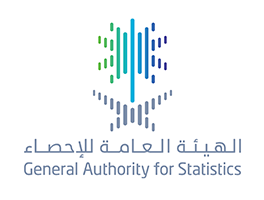
الهيئة العامة للإحصاء تصدر النسخة 53 من الكتاب الإحصائي السنوي 2017م
It includes 20 chapters and data of more than 50 governmental entities
GASTAT releases the 53rd edition of the Statistical Yearbook (2017)
GASTAT released the (53rd) edition of the Statistical Yearbook for 1438/1439 H (2017). It is one of the most important statistical products released by GASTAT to monitor and document statistical data and information, also to shed light on the activities of the governmental bodies and the private sector as well.
Additionally, it reflects the growth rates from year to year and the improvement in the economic, social and population fields. The Statistical Yearbook aims to provide statistical data and information to businessmen, companies, planners, researchers and to the public too. Moreover, it accurately indicates the dimensions of the comprehensive development that were achieved by the Kingdom.
The Statistical Yearbook includes 20 chapters and over 300 tables that contain updated information which were added to improve the display and the documentation of statistical indicators and data. It covers the most significant data and information for different development sectors as well as the main results of the statistical works carried out by GASTAT during the year, also the data received from different statistical departments of more than 50 governmental and private sectors.
Moreover, it includes data about: population and vital characteristic, housing and real-estate, health, training and education, agriculture, water and environment, culture and information, internal trade, social development and services, money, insurance and prices, administrative services, labor market, industry, domestic product and household expenditure, transportation, technology and communication, Islamic affairs, Hajj and Umrah, tourism , entertainment and sport, energy, economic establishments, and data on the budget.
The Statistical Yearbook is not limited to a certain category, for example, the population and vital characteristics chapter is considered one of the significant chapters that includes useful data to conduct a research or to build indicators related to population; and through this, many development requirements can be achieved in all cities and governorates. On the other hand, policy planners and decision makers can benefit from the training and education chapter, the private sector can prepare necessary plans as well to establish more educational institutions. In addition, these data are useful for planners and those who are interested in regulating the labor market.
The social development and services chapter is important for citizens in which it shows the services provided by them. Additionally, this chapter is also useful to social researchers in which it helps them to conduct researches and studies related to social issues.
The findings of the labor market and the social protection’s chapter are very important to prepare plans to regulate the labor market and to find the right solutions. Furthermore, they can be used to conduct economic researches by economists and researches who are interested in this.
Money, insurance and prices chapter can serve a large number of researchers in the economic field to conduct studies that show the inflation rates and the consumption patterns of the population and other indicators.
It is worth mentioning that the first edition of the book was released in 1385 H (1965) and GASTAT usually prepares its chapters based on two main sources: the results of the researches and the field studies carried out by GASTAT and the statistical data received from different statistical departments from various governmental bodies.
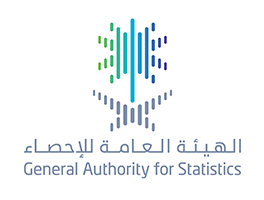
الهيئة العامة للإحصاء: 83.83٪ من إجمالي الأفراد الذين تتراوح أعمارهم من 12 إلى 65 سنة يستخدمون الإنترنت و92٪ يستخدمون الهاتف المتنقل
According to the results of households and individuals’ ICT access and usage survey 2017
GASTAT: 83.83% of individuals (12 to 65 years) use internet, and 92% use cell phone
On Thursday 24th of Sha’aban 1439 H corresponding 10th of May 2018, the General Authority for Statistics has released the report of households and individuals’ ICT access and usage survey results 2017. This report aims at providing recent data and indicators about the communication and information technology activity, which helps decision makers in obtaining necessary statistical data. In addition, it helps in founding a wide range data base that can be used as a reliable reference for ICT activity’ studies and research. It also provides researchers and students with statistical data about the households and individuals ICT activity, so that they can use it in their scientific studies and research that contribute in developing this activity in Saudi Arabia. Not to mention its role in making local, regional, and international comparisons in the households and individuals ICT activity.
Based on the survey results, the percentage of households who can access the internet reached 86.8%. however, households who have fixed phone in their dwellings registered 24.74%. on the other hand, individuals who use the internet recorded 68.13% of total Saudi population, whereas 83.83% of individuals whose ages range between (12 and 65 years) use the internet. As for cell phones, the percentage of individuals who use cell phones is 73.28% of total Saudi population. 91% of individuals whose ages range between (12 and 65 years) use cell phones.
According to the results of this survey, the percentage of households who have a computer in their dwellings reached 46.6% of total Saudi population. However, individuals who use computers registered 24.69%, whereas 30% of total individuals whose ages range between (12 and 65 years) use computers. As for the percentage of households who have a television, they registered 92.67% of total Saudi population.
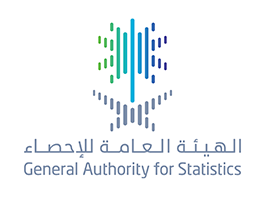
الهيئة العامة للإحصاء تُجري (12) عملاً إحصائياً ميدانياً تستمر حتى مطلع شهر رمضان
Targeting (57350 households) and (33450 establishments)
GASTAT conducts (12) statistical works that last until the beginning of Ramadan
The General Authority for Statistics (GASTAT) has asked all citizens and residents whether individuals or institutions to cooperate with its statisticians who work in the field all over Saudi Arabia, and their work would last until the beginning of Ramadan. GASTAT asserted that all data are dealt with as an information base that developmental decision makers, who work in all related governmental entities, would rely on.
GASTAT spokesman, Mr. Taiseer Almofarrej said that (11317) statisticians are conducting (12) statistical research and surveys in many economic and social fields, and their works will last until the second of Ramadan. These statistical works are targeting (57350 households) and (33450 establishments) in all (13) administrative regions including all cities and governorates.
The results of these works represent a base for making the related developmental decisions. On the level of statistical works that target households, GASTAT is currently conducting the households and individuals’ ICT access and usage survey 2018, the household and population characteristics survey 2018, and the labor force survey, Q2 of 2018.
On the other hand, Almofarrej clarified that the general statistics system issued by the ministers’ cabinet, all data and information provided by any citizen, resident, or establishment are kept and dealt with confidentiality. He added that the people’s cooperation with statisticians would guarantee the success of these works, and using them in supporting economic and social development accordingly.
It is worth mentioning that GASTAT is following certified international standards in choosing the sample of these works. Thus, GASTAT asks all individuals in the statistical society, either households or establishments, to cooperate with the statistician who can be identified by his official card. In addition, there is a communication center that everyone contacts on 920020081

الهيئة العامة للاحصاء تشارك في الدورة السابعة للجنة الإحصائية لمنظمة التعاون الاسلامي
GASTAT participates in the seventh round of OIC-StatCom
The General Authority for Statistics (GASTAT) participates in the meetings of the seventh round of the Organization of Islamic Cooperation Statistical Commission (OIC-StatCom), which are held in Ankara- Turkey, during the period 2-3 May, 2018, corresponding 16-17 Shaaban, 1439H. On the first day of the meetings, the director- general of Methodologies and Statistical Classifications has presented in details how to use administrative records and vital statistics in the next population census which will be conducted in 2020. On the other hand, the vice president for Statistical Works has met the director- general of Statistical, Economic, and Social Research and Training Center for Islamic Countries (SESRIC),
Ambassador Musa KulaKlikaya. During their meeting, they shed light on GASTAT statistical transformation experience, and how can they reflect the experience of Saudi Arabia on other Islamic countries. Moreover, the vice president, and on behalf of all GASTAT staff, has expressed his thanks and gratitude for all the efforts exerted by the center. He assured that the authority can always provide support in different statistical fields. In the end, the center’s director-general has thanked the authority for their initiative, and expressed the center’s desire to sign a memorandum of understanding with GASTAT in the field of statistics.
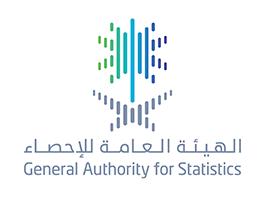
الهيئة العامة للإحصاء : وفق مسح ممارسة الرياضة للأسر بالمملكة ( 14.89% ) من السكان يمارسون الرياضة لأكثر من 150 دقيقة في الأسبوع
New survey to be released for the first time in cooperation with the General Sports Authority,
GASTAT: According to the survey of Households Sports Practice in Saudi Arabia (14.89%) of population are practicing sports for more than 150 minutes’ weekly
On Tuesday 15th of Shaaban 1439H, corresponding to 1st of May 2018, GASTAT has released the results of Households Sports Practice Survey, 2017. The survey complements the surveys implemented by GASTAT in 2017. Households sports practice is one of the Saudi vision 2030 requirements. In addition, this kind of practice includes indicators that are targeted by 2030. The data of this survey allows conducting many developmental studies and plans in general, and in the sports field in particular. These studies and plans should support the development of many programs and initiatives that do increase the rate of households sports practice. The survey methodology and form must be compatible with the international standards and recommendations issued by ILO on one hand, and with the General Sports Authority needs on the other hand.
According to the survey results, the percentage of individuals (15 years and older) who are engaged in sports activities for more than 150 minutes weekly reached (14.89%). However, those who do not practice sports recorded (85.11%). Moreover, the percentage of Saudi males and females (15 years and older) who are engaged in sports activities for more than 150 minutes’ weekly registered (11.24%), (8.83%) of whom are males and (2.41%) are females. On the other hand, the percentage of non-Saudi males and females who are engaged in sports activities hit (3.65%).
The results also indicated that the percentage of those who practice sports in public facilities (public place, garden…etc) is 59.04%. in contrast, those who practice sports in GYMs registered 15.11%, while those who practice it at home recorded 14.75%. Additionally, the percentage of individuals who practice sports in clubs recorded 1.63%, whereas those who practice it in other places registered only 1.19%
The survey revealed that the reasons of not practicing sports among Saudi population varied. Some people have chosen not to practice it with a percentage of 50.47%, and some do not have time to practice (32.11%). However, some people do not have public facilities in their neighbourhoods (14.65%), and some have other reasons for not practicing (2.77%).
The survey aims at providing recent statistical indicators and data about households’ sports practice. In addition, it provides the reasons behind not practicing sports by kind of relationship with the household head, and classification by gender, nationality, educational status, age, marital status. Furthermore, it provides data about the percentages of individuals engaged in sports activities on at the administrative regions level.
GASTAT will work on improving the survey indicators periodically in cooperation with the General Sports Authority, in a way that supports the 2030 Saudi vision achievement.
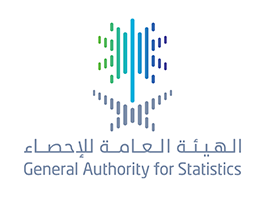
الهيئة العامة للإحصاء: ارتفاع مُعدَّل المشاركة الاقتصادية، واستقرارٌ في مُعدَّل البطالة بين السعوديين
Within the results of labor market bulletin, quarter 4, 2017
GASTAT: Saudis’ economic participation rate increased, and unemployment rate remained stable
The General Authority for Statistics (GASTAT) releases on its official website www.stats.gov.sa the Labor Market Bulletin for the fourth quarter of 2017, which provides comprehensive data and indicators on the Saudi labor market taken from the labor force survey conducted by the Authority on a quarterly basis, and from the administrative records of some relevant entities (Ministry of Labor and Social Development, Ministry of Civil Service, General Organization for Social Insurance, Human Resources Development Fund and National Information Center).
The results of the bulletin (third quarter, 2017) showed an increase in the economic participation of Saudis (15 years and older) as it reached (41.9%) compared to (40.7%) in Quarter 3, 2017, with an increase of (1.2%). The results indicated that the economic participation of Saudi females has increased by (19.4%) compared to (17.8%), whereas, Saudi males’ participation has increased by (63.4%) compared to (62.6%) in the third quarter of 2017. However, the results demonstrated a stability in the unemployment rate of the Saudi population for the third time, where it stabilized at (12.8%), the unemployment rate of all population (Saudis and non-Saudis) has registered (6.0%), with an increase of (0.2%) compared to the previous quarter. The results also showed a decline in the unemployment rate of Saudi with (31.0%) compared to (32.7%) in quarter 3. On the other hand, Saudi males’ unemployment rate has registered an increase by (7. 5%) compared to (7.4%) in quarter 3. Moreover, the results indicated that according to the administrative records of Saudi Arabia, there is a decline in the numbers of Saudi job seekers during the fourth quarter of 2017, as they reached (1,086,561) persons with a decline of (11.8%) compared to the third quarter of 2017. In contrast, the numbers of Saudi employed persons have increased by (3.3%) with (3,163,846) persons.
The bulletin included a large number of detailed data about workers according to the regulations they are subject to, nationality, gender, age, administrative region, and educational level, as well as data about job seekers, average monthly wage, working hours and domestic workers.
On the other hand, the official spokesman of the General Authority for Statistics (GASTAT), Taiseer Al-Mofarrej, clarified that when comparing the unemployment rate of total population ( Saudis and non-Saudis) in Saudi Arabia, which registered (6%) in this quarter, with the unemployment rates of the Group of Twenty (G20), we find that Saudi Arabia is in the average rate, as ten countries among which is Saudi Arabia has registered rates ranging between (4%) and (7%). The below table shows the unemployment rates of G20:
Unemployment rates in G20
Country
Unemployment rate
South Africa
26.7
Brazil
12.6
Italy
10.9
Turkey
10.8
France
8.9
Argentina
7.2
Canada
5.8
Saudi Arabia
6
Australia
5.5
Indonesia
5.5
Russia
5.0
South Korea
4.5
United Kingdom
4.2
United States
4.1
China
3.9
Germany
3.8
India
3.5
Mexico
3.2
Japan
2.5
Almofarrej added, the results of the labor market bulletin, Quarter 4, 2017 have showed the tendencies of jobseekers in the Saudi market, as the percentage of those who seek a government job reached 38%.
It is worth mentioning that GASATAT has previously clarified the difference between job seekers and unemployed, and that unemployment rate cannot be calculated based on the number of jobseekers that is registered in the databases of other government entities. The "unemployed" according to the Labor Force Survey are individuals (15 years and older) who were jobless during the period of the time reference (the survey period): the previous week of the household visit and have been looking for a job seriously during the four weeks prior to the household visit (they have at least taken one way to look for a job). This includes those who did not search for jobs during the four weeks prior to the household visit because they were waiting for a job or starting their own business in the coming period, where they had already been looking for work before the time reference period and at the same time they were able to work and were ready to join it (If available), during the week preceding the household visit.
Additionally, jobseekers can be defined as Saudi individuals (males or females) enrolled in the job search programs of the Ministry of Civil Service (Jadarah or Saa’ed) and the Human Resources Development Fund (Hafiz), and they register their personal data, qualifications, practical experiences and CVs through an electronic system.
Not to mention that job seekers in the administrative records are not subject to the internationally recognized standards and conditions of unemployment approved by the ILO, and therefore are not considered to be unemployed. Hence, not every job seeker is considered unemployed, S/he may be looking for work and is working in another job, this is the case in those who seek a government job and are working, for example, in the private sector and not registered in the records of the General Organization of Social Insurance (GOSI), as if there is a jobseeker and s/he works in the private sector and subscribed in GOSI, s/he ca not be considered within jobseekers in the labor market bulletin.
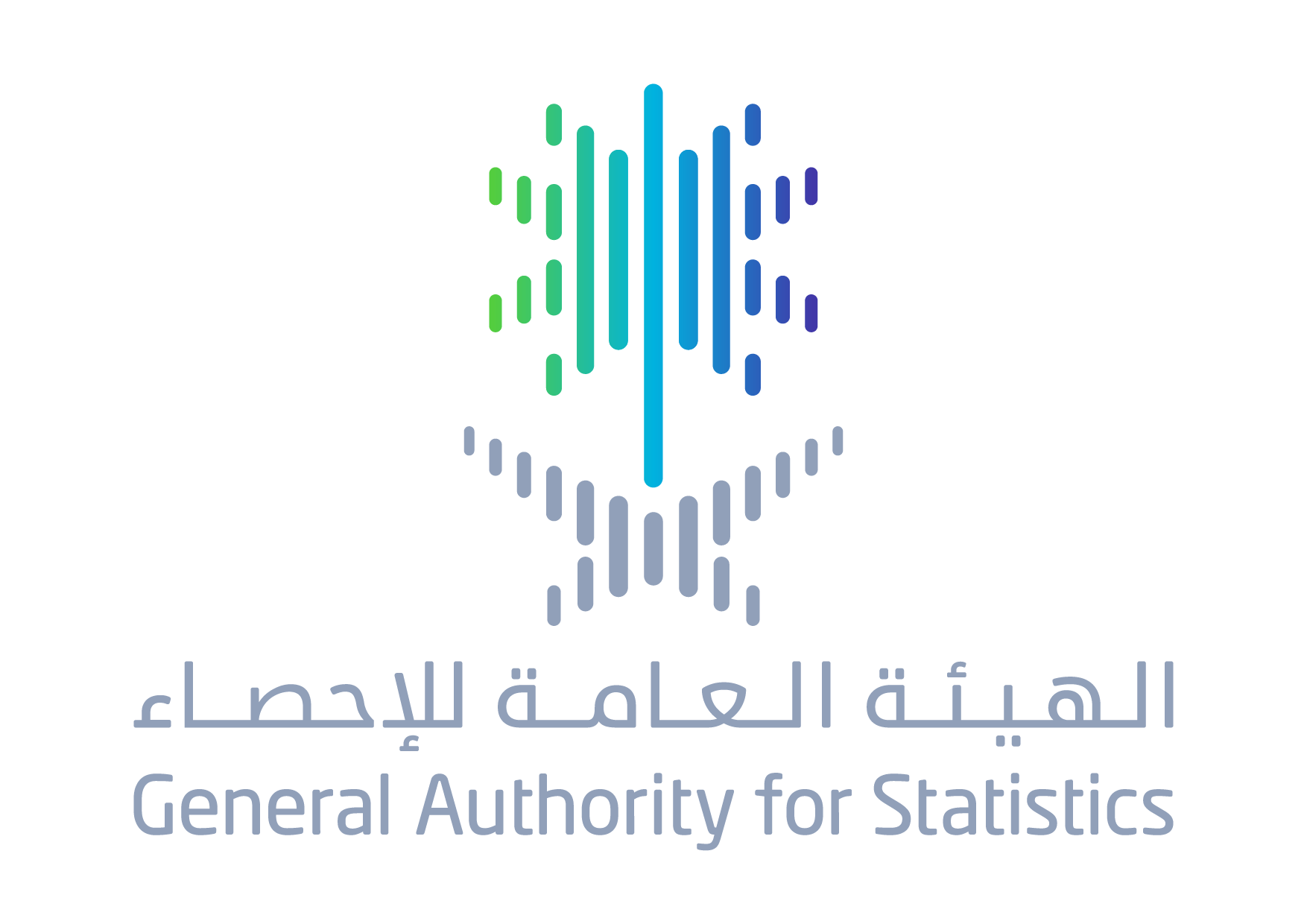
الهيئة العامة للإحصاء: انخفاض مؤشر أسعار العقارات خلال الربع الأول 2018
GaStat: A Decline in the Real-Estate Price Indicator During the First Quarter of 2018
On Monday, the 7th of Shaaban 1439H corresponding April 23, 2018, The General Authority for Statistics (GaStat) released the report of Real Estate Price index, Q1 2018. The report is published on GaStat official website www.stats.gov.sa.com .Furthermore, the indicator is based on the data records about real-estate’s transactions available at the Ministry of Justice, and it is an important tool to support economic and statistical decision makers regarding the changes of property prices and future forecasts during different periods of time.
According to the report, the real-estate price index has recorded a decline by (1.5%) compared to the same quarter of last year (Q1, 2017). The report attributed this decline to the decrease in the main sectors composing it: the housing sector (2.0%), the commercial sector (4.4%), and the agricultural sector (0.4%).
Moreover, the indicator edged down (0.5%) compared to the previous quarter (Q4 2017) reaching (84.2%) in the first quarter of 2018 compared to (84.6%) for the previous quarter. This decline can be attributed to the main sectors composing it where they witnessed varying degrees of decline: (0.7%) for the housing sector, (0.5%) for the commercial sector and (0.1%) for the agricultural sector.
It is worth mentioning that the indicator of the Real Estate Price index, which aims at founding outstanding real-estate statistical indicators that measure the performance of Saudi real-estate market and meeting the data needs in this sector, covers three main sectors consisting of several types of real estate: housing sector which includes the following (plot of land, building, villa, apartment and house), commercial sector includes (plot of land, building, exhibition, commercial center or shop), agricultural sector with one category which is the agricultural land.
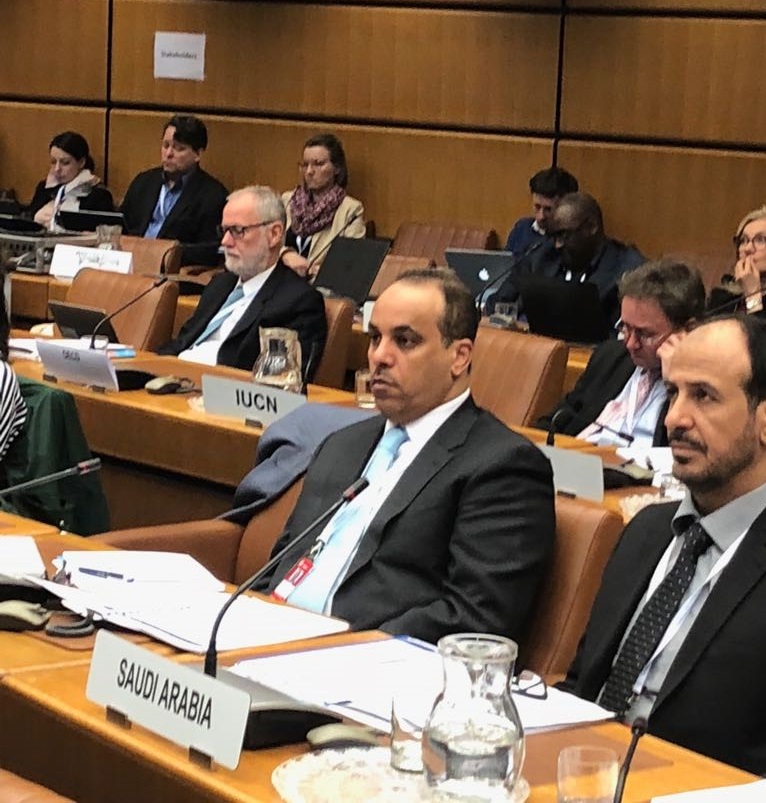
المملكة تختتم مشاركتها في أعمال الاجتماع السابع للمنظمات الدولية المشاركة ومجموعة الخبراء لمؤشرات أهداف التنمية المستدامة
The General Authority for Statistics (GaStat) is the responsible entity for building indicators of the Kingdom's sustainable development goals
The kingdom concludes its participation in the 7th meeting for the participated international organizations and the experts team of the sustainable development goals’ indicators
The kingdom concludes its participation in the 7th meeting for the participated international organizations and the experts team of the sustainable development goals’ indicators. This meeting was hosted by the United Nations Industrial Development Organization (UNIDO) between 9-13 of April to review the classifications of the sustainable development goals, discuss the implementation of the guidelines of data flow, report the global data, document the best practices in reporting the global data, and to review a number of suggestions to obtain additional indicators for the sustainable development.
The president of GaStat, HE Dr.Fahad bin Sulaiman AL-Tekhaifi , who headed the Saudi delegation participating in the meetings, affirmed that Saudi Arabia is one of the countries that made significant progress in achieving the goals of the sustainable development, since that GaStat is the official entity responsible for building indicators of sustainable development in accordance with the governance of the work of statistical entities accredited to all countries to enable access to data of the index production. And that is through making a plan to collect the data of the index production whether by the implemented surveys, implementing new surveys, adding new questions to the existing surveys, or through the administrative records. in addition, identifying the government entities that produce data related to those indicators and follow-up the international and regional work of the sustainable development goals in particular and other development goals in general. HE added that GaStat has the membership of the regional committee which includes the Standing Committee for Progress Indicators and Sustainability 2030 of the GCC statistical centre. GaStat has also examined the current situation of the sustainable development goals 2030, identified its sources and availability in the Kingdom, as well as its periodicity, coverage and classification.
It is worth mentioning that The United Nations General Assembly in partnership with the member countries, international organizations and civil society have identified (17) goals, (169) purposes and more than (2440 indicators for the sustainable development, and have also established the Inter-Agency Expert Group for the Indicators of Sustainable Development Goals (IAEG-SDGs) on 6 March 2015, which is composed of member countries, including regional and international agencies. The Kingdom of Saudi Arabia, represented by GaStat, participates in all meetings of committees and organizations related to sustainable development.
